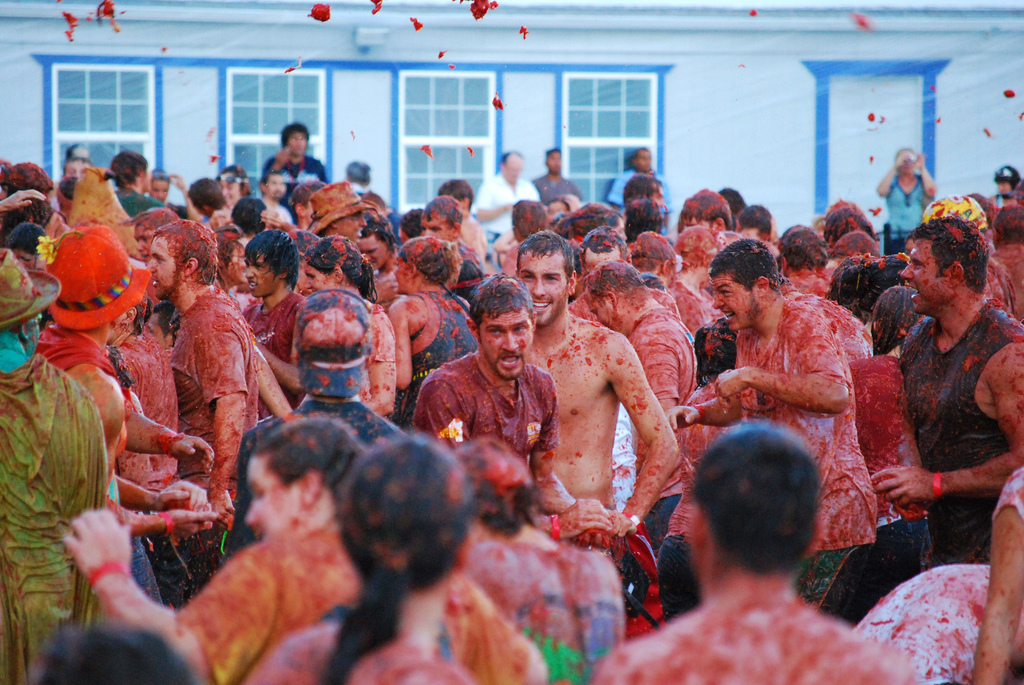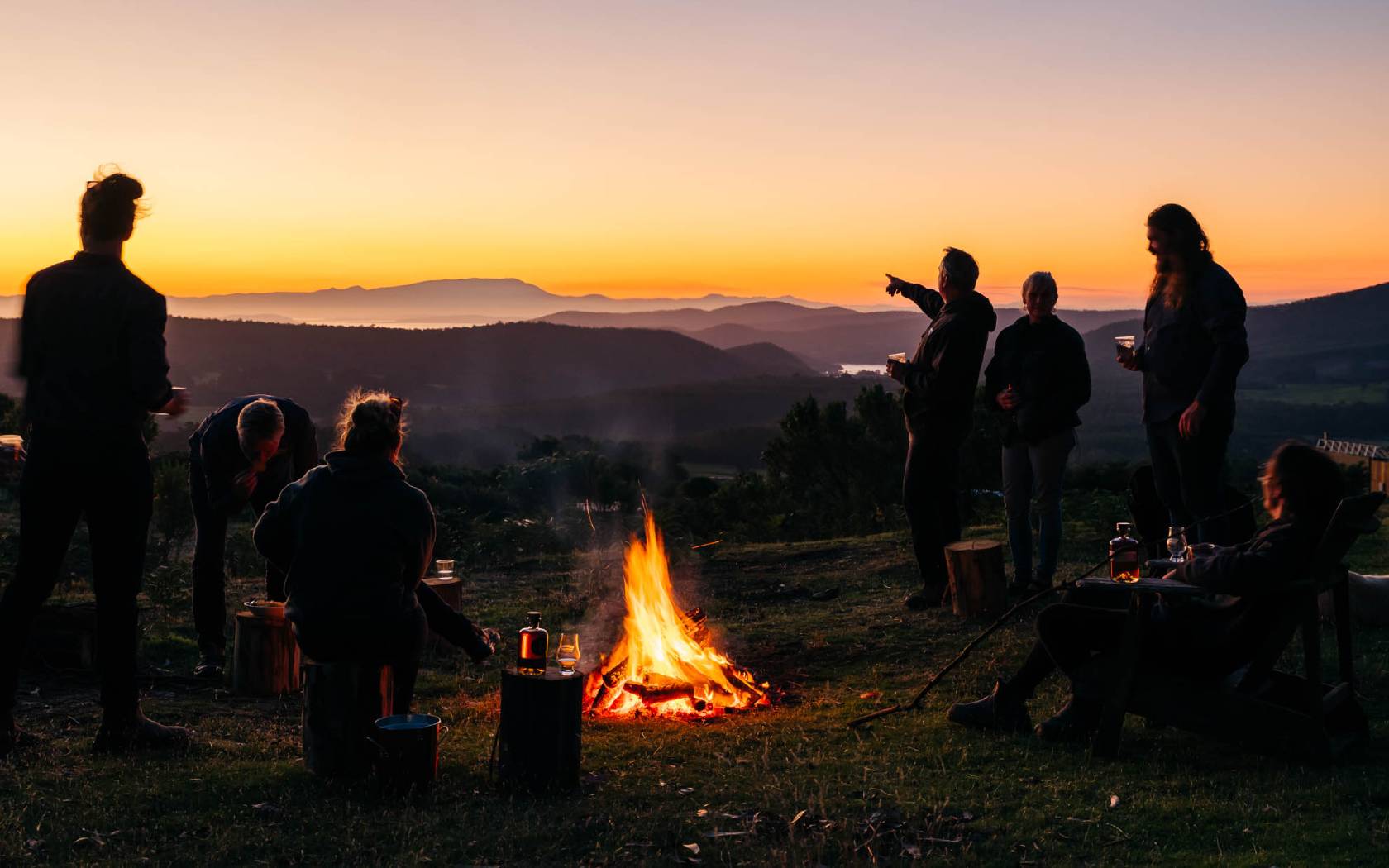Spain’s Best And Most Bizarre Fiestas

Catherine Mah is a writer currently based in Sydney. She’s…
Anyone who’s been to Spain will tell you that’s where the biggest parties are. From the tomato-throwing festival and the Battle of Wine to the more obscure baby jumping celebrations, there are fiestas and festivities taking place the country over, all year round. You’ve just got to know where to go.
THE BEST:
Carnaval

Brazil’s Rio may spring to mind when it comes to Carnaval but Spain is one of the best places to celebrate in Europe. For the biggest party, head to Santa Cruz de Tenerife in the Canary Islands or Cadiz, where the weather is warm even in February and March.
The week-long party culminates in a weekend of dressing up, where you can witness people costumed as anything, from priests and clowns to more elaborate get-ups like Tetris blocks and Transformers. Join in on the fancy dress parade – who knows when you’ll come across your next chance to dress up like a Ghostbuster.
Las Fallas
Perfect for those who find fire fascinating, Las Fallas in Valencia celebrates gunpowder and the burning of ninots, satirical sculptures of public figures up to 30 metres high. The party takes place in mid-March, with processions of ninots, a judging of the best, and on the last day, la cremá. Watch in awe as these magnificent creations, that have taken almost a year and hundreds of thousands of euros to construct, are ultimately cremated.
Feria de Abril
What better way to farewell the sobriety of Easter than to launch a six-day fair two weeks later in Seville? Expect a carnivalesque air, with locals and children dressed in polka-dotted traditional Andalusian garb, lots of marquees and free flowing sherry into all hours of the morning.
Haro Wine Festival

Wine lovers rejoice. You can literally bathe in the good stuff every June in Spain’s top wine producing region. The highlight of the Haro Wine Festival is the Battle of Wine held annually on June 29, where locals and tourists climb a mountain in the wee hours of the morning and spray truckloads of wine on each other. The party continues in town afterwards, and laundromats are full up for the next few days.
San Fermin
Arguably Spain’s most famous party, the running of the bulls in Pamplona sees the number of visitors to this city of 200,000 explode to over a million in the course of a week. The party begins on July 6 with a rocket launch, and the first bulls are let loose to run along the fenced path towards the bullring the following morning.
If you miss the first one because you were partying too hard the night before, you have six more days to catch it. A word of caution: most travel insurance providers won’t cover you if you have a mishap with a very angry bull.
Fiestas del Pilar
Held in Zaragoza in October, the Fiestas del Pilar have a strong religious undercurrent. Don’t be fooled, however; there’s merriment to be had at this approximately nine-day party. To celebrate the patron saint of Spain, you can drink German beer at the Oktoberfest-style beer fair, try your hand at bullfighting against heifers and have a rollicking time at the funfair.
For those so inclined, there’s the opportunity to attend a pre-dawn mass on the actual saint’s day on October 12, or offer flowers to the Virgin Mary alongside 400,000 others.
La Tomatina

Just 30 minutes from Valencia, Buñol is where the annual Tomatina takes place on the last Wednesday of August. This tomato free-for-all has been happening since the ’40s with very few rules. 1. Squish ‘em before you throw ‘em (no one likes getting smashed in the noggin with a hard fruit) and 2. nothing but tomatoes.
Nochevieja
Possibly the biggest national party in the Spanish calendar, New Year’s Eve is one to remember in Spain. If you don’t mind huge crowds, grab a spot in the Puerta del Sol in Madrid’s city centre and celebrate the countdown to midnight. Don’t forget to pack your grapes; Spaniards count down from 12 to symbolise the 12 months and eat a grape on each count for good luck. Chubby bunnies, indeed.
THE BIZARRE:
Goat throwing in Manganeses de la Polvorosa

Until the start of the 21st century, in a sleepy village in Castilla y Leon, villagers would mark the Day of San Vicente the Martyr by hurling a goat from the church belfry. They used a canvas sheet to catch the goat, so it would bounce up and down until it came to a rest, generally unharmed if not a bit dazed.
After animal rights groups got involved, goat throwing was outlawed but you can still take part of the annual celebrations when you visit Manganeses de la Polvorosa towards the end of January. The goat-y element has been preserved, with the animal now holding pride of place at the head of the procession that snakes through the town.
Baby jumping in Castrillo de Murcia
There’s no better way to get over your fears as a new parent than to let a stranger dressed as the devil jump over your newborn baby. El Salto del Colacho roughly translates to “the devil’s jump” and is part of the celebrations of Corpus Christi in Castrillo de Murcia. It involves babies being laid on mattresses along a street while grown men in red and yellow take a flying leap over them to cleanse them of sin and ward off evil.
Exact dates change yearly, but fall in May or June. It’s open to babies born in the previous 12 months.
Fire walking in San Pedro Manrique
On Midsummer Night in San Pedro Manrique, a few tonnes of wood are burned to create a carpet of red-hot coals. Then a dozen lucky young men get to walk across the ashes as the rest of the village watches with bated breath. It’s said that only the locals don’t get burnt, but if you want to try this at home, carrying someone on your back adds extra weight and avoids combustion.
Day of the snail people in Tricio

Tricio, a tiny town in northern Spain, is fondly known by its neighbours as the village of the snail people.
During the Fiestas of San Bartolome at the end of August, the children have a snail race, where they harness their trained molluscs to a 250g can of peppers and set them loose to crawl – painfully slowly – towards an open can of anchovies. There’s also a donkey race and a caracolada – a massive stew made with chorizo, tomatoes and snails of course, big enough to feed the village of 400 people, plus guests.
(Lead image: Nick Gammon/fest300.com)
Feel like throwing a tomato? Have a baby to be blessed? Check out Qantas flights to Spain.
Catherine Mah is a writer currently based in Sydney. She’s lived in Spain, Taiwan and Brazil and will try any dish on her travels that you throw her way (rotten shark in Iceland, bee larvae in China and thistles in Spain are notable examples).








